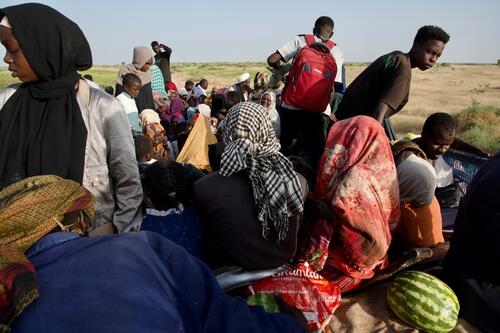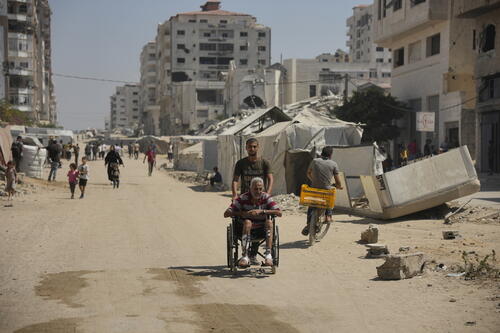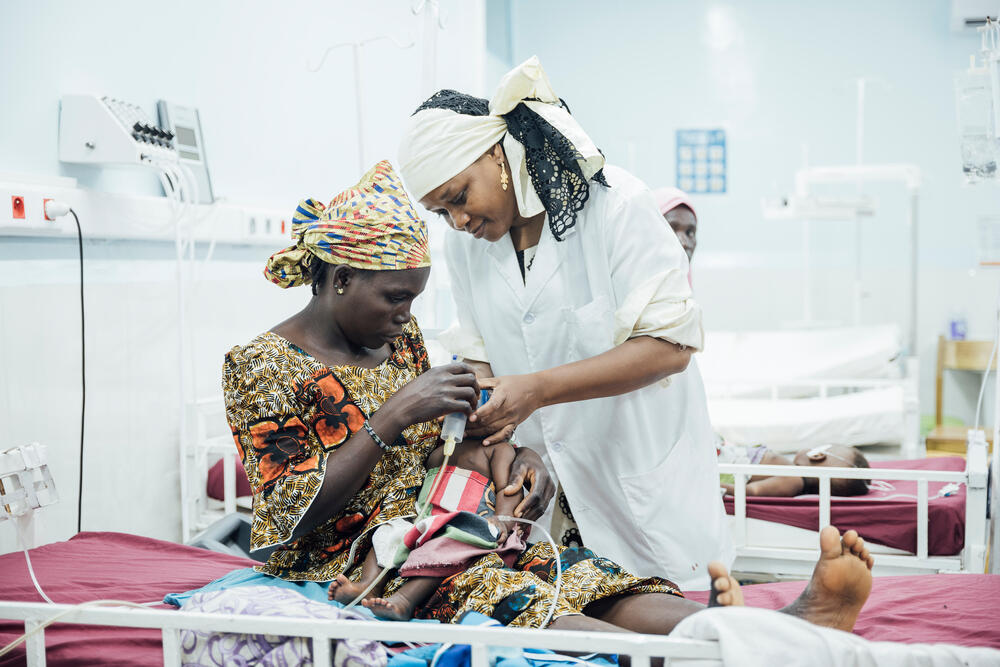Malnutrition
Malnutrition is a devastating global healthcare issue. Around the world, more than 232 million children suffer from malnutrition. The condition is directly linked to almost half of all deaths of children under five years old.
When children suffer from acute malnutrition, their immune systems are so impaired that the risk of death is greatly increased.
The critical age for malnutrition is from six months – when mothers generally start supplementing breast milk with other foods – to 24 months. However, children under five, adolescents, pregnant or breastfeeding women, the elderly and the chronically ill are also vulnerable.
People become malnourished if they are unable to take in enough or utilise fully the food they eat, due to illnesses such as diarrhoea or other longstanding illnesses, such as measles, HIV and tuberculosis.
We estimate that only three percent of the 20 million children suffering from severe acute malnutrition receive the lifesaving treatment they need.
In 2023, we admitted 161,000 severely malnourished children into our inpatient feeding programmes, and 499,500 to outpatient programmes.
Malnutrition: Key facts
209,000
SEVERELY MALNOURISHED CHILDREN ADMITTED TO INPATIENT FEEDING PROGRAMMES BY MSF IN 2024
149
MILLION CHILDREN GLOBALLY SUFFER STUNTING DUE TO UNDERNUTRITION
45%
OF CHILD DEATHS GLOBALLY LINKED TO MALNUTRITION
What causes malnutrition?
There are many factors which play a role in malnutrition, and MSF teams are seeing more and more of it across our projects in places with growing conflict, displacement, natural disasters, and blockages of humanitarian aid. In many places where we work, the lack of food and access to clean water combines with a lack of healthcare to create a vicious cycle.
Breast milk is the only food a child needs for its first six months. Beyond this point breastfeeding alone is not sufficient. Diets at this stage must provide the right blend of high-quality protein, essential fats and carbohydrates, vitamins and minerals.
For a child under the age of two, their diet will have a profound impact on their physical and mental development.
Malnourished children under the age of five have severely weakened immune systems and are less resistant to common childhood diseases.
This is why a common cold or a bout of diarrhoea can kill a malnourished child. Of the five million deaths of children under five years of age each year, malnutrition contributes to at least 45 percent.
What are the symptoms of malnutrition?
Understandably, the most common sign of malnutrition is weight loss. Loss of weight may also be accompanied by a lack of strength and energy and the inability to undertake routine tasks. Those who are malnourished often develop anaemia and therefore a lack of energy and breathlessness.
In children, signs of malnutrition may include an inability to concentrate or increased irritability and stunted growth.
In cases of severe acute malnutrition, swelling of the stomach, face and legs and changes in skin pigmentation may also occur.
How is malnutrition diagnosed?
Malnutrition is diagnosed by comparing standard weights and heights within a given population, or by the measurement of a child’s mid-upper arm circumference (MUAC).
If dietary deficiencies are persistent, children will stop growing and become ‘stunted’ – meaning they have a low height for their age. This is diagnosed as chronic malnutrition.
If they experience weight loss or ‘wasting’ – low weight for one’s height – they are diagnosed as suffering from acute malnutrition.
This occurs when a malnourished person begins to consume his or her own body tissues to obtain needed nutrients.
In the severe acute form, children with kwashiorkor – distended stomachs – can be clinically diagnosed with body swelling irritability and changes in skin pigmentation.
How is malnutrition treated?
We believe that ready-to-use therapeutic food (RUTF) is the most effective way to treat malnutrition. RUTFs include all the nutrients a child needs during its development and helps reverse deficiencies and gain weight.
RUTFs don’t require water for preparation, which eliminates the risk of contamination with water-borne diseases.
Because of its packaging, RUTFs can be used in all kinds of settings and can be stored for long periods of time. Unless the patient suffers from severe complications, RUTFs also allow patients to be treated at home.
Where malnutrition is likely to become severe, we take a preventative approach by distributing supplementary RUTF to at-risk children.
Spotlight: Malnutrition in Niger
Malnutrition: News and stories



